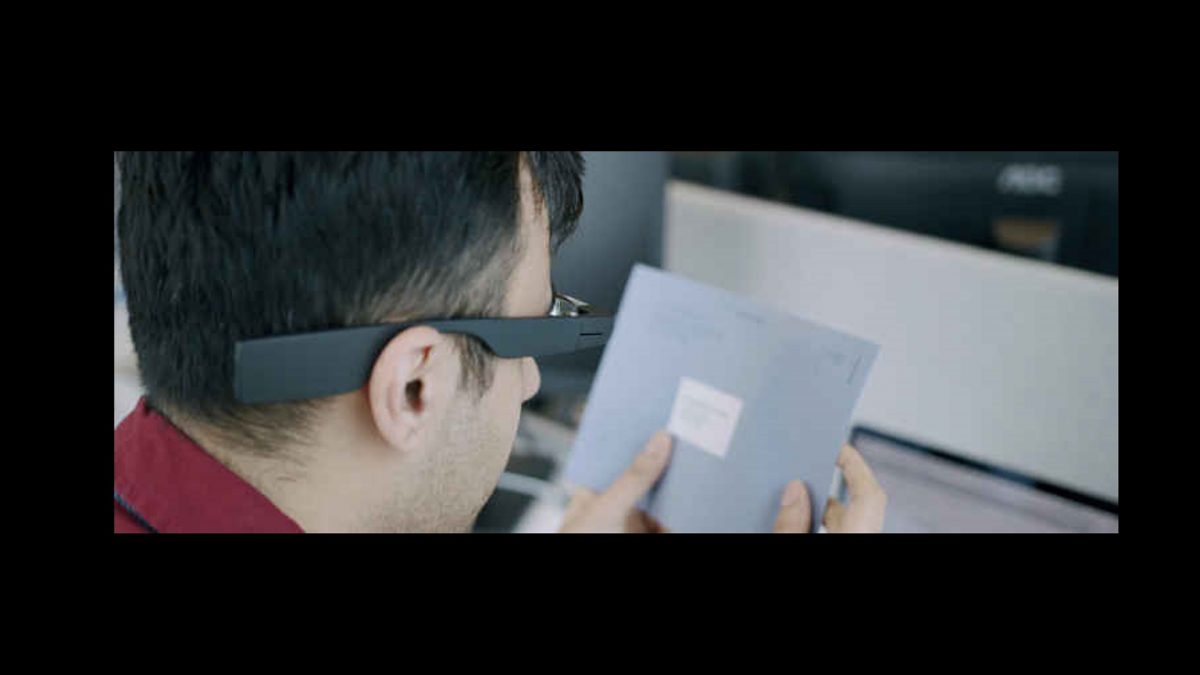Discover Advanced Assistive Instruments for Individuals With Aesthetic Impairments
The landscape of assistive modern technology for individuals with aesthetic impairments is progressing rapidly, offering a range of innovative gadgets that enhance freedom and interaction. From smart glasses that effortlessly merge visual input with auditory advice to advanced navigation applications that redefine spatial awareness, these tools are improving possibilities.
Smart Glasses Innovations
Smart glasses stand for a considerable innovation in assistive technology for people with aesthetic impairments. Outfitted with sensing units and cameras, clever glasses can capture real-time aesthetic information, which is then refined and conveyed to the individual through audio feedback or haptic feelings.
Moreover, advancements in artificial knowledge have actually even more enhanced the abilities of clever glasses. Artificial intelligence algorithms can acknowledge faces, checked out message, and determine items, making them invaluable devices for daily tasks. Customers can receive auditory hints that give context concerning their atmosphere, fostering freedom and confidence.
In addition, the ergonomic design and lightweight nature of numerous clever glasses make them suitable for prolonged usage, guaranteeing convenience while enhancing performance. As these tools remain to advance, they hold the prospective to change the way people with aesthetic impairments experience their everyday lives, connecting the void in between ease of access and modern technology. The ongoing research study and advancement in this field pledge to expand the possibilities for wise glasses, making them a crucial component of contemporary assistive gadgets.
Navigation Application and Equipment
Countless navigating apps and tools have emerged as important sources for people with aesthetic disabilities, considerably boosting their ability to pass through unfamiliar settings. These technologies take advantage of GPS performance, audio hints, and real-time information to provide individuals with exact navigating support.
One famous instance is the Aira application, which links customers to experienced representatives who can provide aesthetic summaries of surroundings and navigation guidance with an online video feed. This solution enhances the customer's spatial awareness and confidence while navigating. One more significant tool is Seeing Eye GPS, which uses voice-guided navigating and sights, making it possible for customers to accessibility essential info about their surroundings.

As technology remains to development, the development of more advanced navigation devices guarantees to more encourage individuals with aesthetic impairments, promoting smooth mobility and combination into diverse atmospheres. Such innovations contribute in advertising an extra inclusive culture.
Braille Innovation Developments
In the last few years, developments in Braille modern technology have considerably transformed exactly how individuals with visual disabilities accessibility information and involve with the globe around them. The development of mobile Braille display screens has actually transformed analysis by allowing customers to connect wirelessly to computer systems, mobile phones, and tablet computers. These tools convert message right into Braille in real-time, allowing seamless interaction with digital content.
Furthermore, innovative Braille printers have actually arised, improving the manufacturing of tactile materials. Modern embossers are faster and extra reliable, permitting the quick creation of Braille papers and academic products. This efficiency lowers the time and price connected with producing Braille how to become an optometrist resources, making them a lot more available to organizations and colleges.
In addition, the assimilation of Braille with various other innovations, such as fabricated intelligence and artificial intelligence, has actually opened new opportunities for tailored learning experiences. Voice acknowledgment and synthesis innovations can match Braille, giving a comprehensive method to info circulation.
As the need for inclusive education and learning and work environment settings expands, these technical developments play an important function in encouraging people with aesthetic problems, guaranteeing they have equivalent access to information and opportunities in numerous aspects of life.
Wearable Devices for Independence
A growing selection of wearable gadgets is improving freedom for individuals with visual problems, offering innovative services that boost navigation and daily living. Braille displays and notetakers. These tools make use of sophisticated modern define optometrist technologies to give real-time comments and support, advertising autonomy in different atmospheres

Wearable innovation also includes smartwatches that can be programmed with access attributes, making it possible for individuals to get notifications, track their areas, or perhaps ask for assistance with the touch of a switch. Some gadgets incorporate artificial knowledge to examine the setting, offering audio summaries of nearby items or people.
Voice-Activated Assistive Solutions
Leveraging voice-activated assistive solutions has transformed the landscape of assistance for individuals with aesthetic problems, offering hands-free communication and access to a selection of jobs. These technologies make use of all-natural language handling and man-made knowledge to make it possible for customers to do day-to-day tasks via easy voice commands.

Furthermore, recent advancements in voice recognition accuracy have actually improved the customer experience substantially, fitting diverse accents and speech patterns. This inclusivity makes certain that even more individuals can gain from these technologies, promoting a better sense of autonomy.
Conclusion
To conclude, the development of sophisticated assistive gadgets dramatically enhances the self-reliance and quality of life for individuals with visual problems. Developments such as wise glasses, navigation apps, Braille innovation, wearable tools, and voice-activated services jointly foster an even more comprehensive environment. These innovations empower customers to browse their surroundings with self-confidence and involve more completely with the world, inevitably advertising higher ease of access and level playing fields for people dealing with aesthetic difficulties.
The landscape of assistive modern technology for individuals with aesthetic impairments is progressing swiftly, offering a variety of cutting-edge gadgets that enhance autonomy and interaction.Smart glasses represent a considerable improvement in assistive modern technology for individuals with aesthetic disabilities. As these tools proceed to develop, they hold the prospective to transform the means people with aesthetic problems experience their everyday lives, connecting the here space in between ease of access and innovation.In current years, advancements in Braille technology have substantially changed exactly how individuals with visual disabilities accessibility information and involve with the globe around them. These technologies empower users to navigate their environments with confidence and involve even more totally with the globe, eventually promoting higher access and equivalent possibilities for individuals encountering aesthetic obstacles.